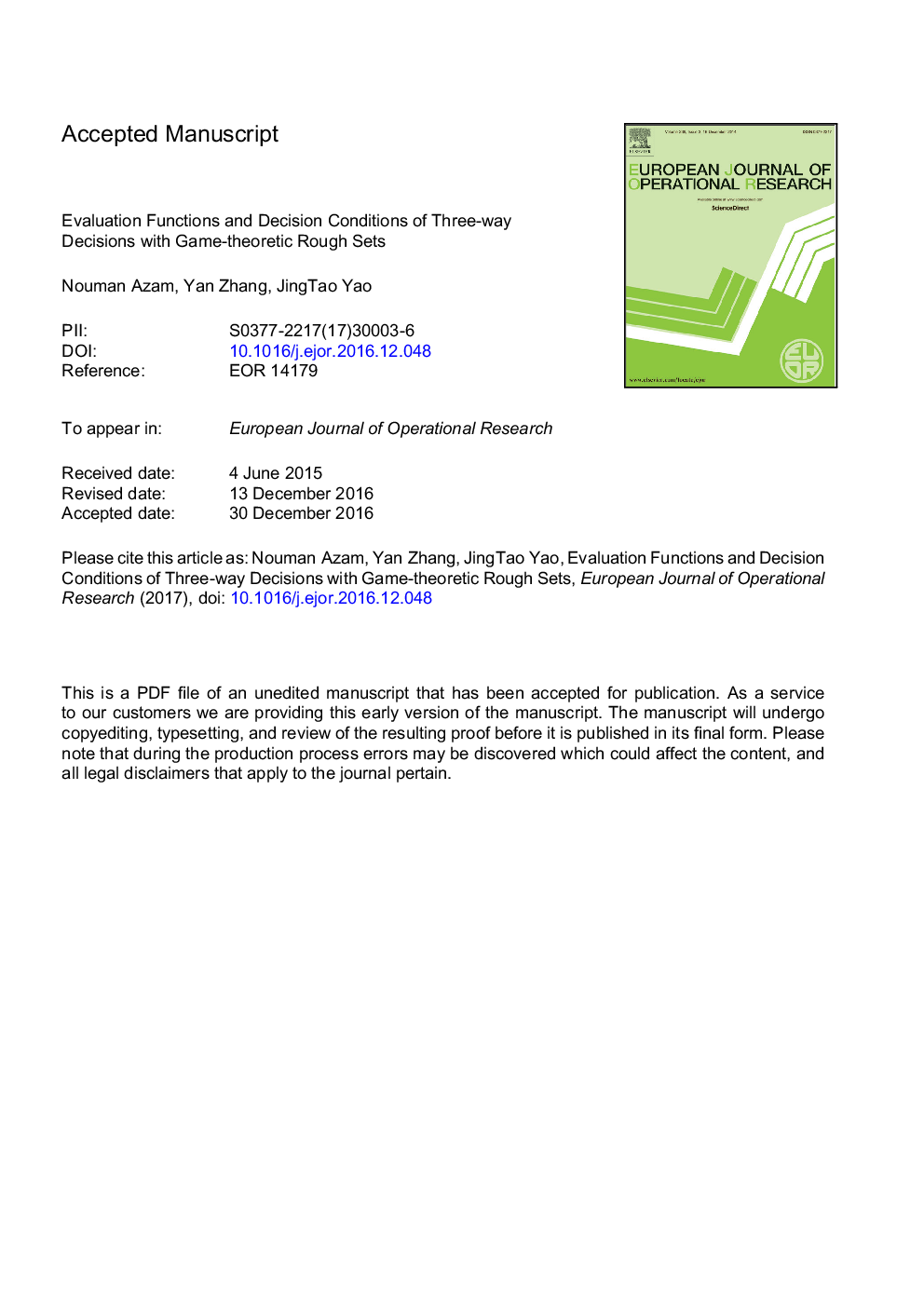ترجمه فارسی عنوان مقاله
توابع ارزیابی و شرایط تصمیم گیری تصمیم گیری سه بعدی با مجموعه های خشنودی بازی-نظری
عنوان انگلیسی
Evaluation functions and decision conditions of three-way decisions with game-theoretic rough sets
| کد مقاله | سال انتشار | تعداد صفحات مقاله انگلیسی |
|---|---|---|
| 114129 | 2017 | 37 صفحه PDF |
منبع

Publisher : Elsevier - Science Direct (الزویر - ساینس دایرکت)
Journal : European Journal of Operational Research, Volume 261, Issue 2, 1 September 2017, Pages 704-714
ترجمه کلمات کلیدی
مجموعه های خشن بازی گرا، نظریه بازی، تصمیمات سه گانه، مجموعه های خشن، مجموعه های خشن احتمالی،
کلمات کلیدی انگلیسی
Game-theoretic rough sets; Game theory; Three-way decisions; Rough sets; Probabilistic rough sets;

